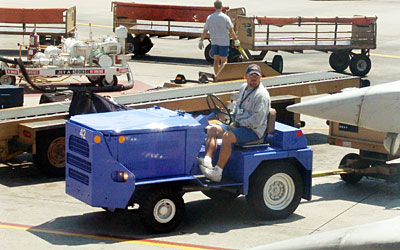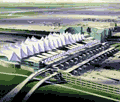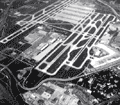
The American Civil Liberties Union expressed its support today for enhancing airport safety, but cautioned against implementing ineffective measures that foster a false sense of security. "Heightened airport security and respect for civil liberties are not mutually exclusive -- the former can be achieved without diminishing the latter," said Rachel King, an ACLU Legislative Counsel. "Evidence has also shown that security measures that infringe on civil liberties are notoriously ineffective and create an illusion of security." As Congress held hearings today on a series of airport security proposals, the ACLU suggested a number of proven security measures that do not infringe on individual liberty. These measures include: increased training for security personnel, heightened screening of airline and airport security personnel, strict control of secured areas in airports, measures to improve security at foreign airports, a neutral party to which travelers can report lax security procedures and the matching of luggage with all passengers. The ACLU said it also supported the installation of biometric identification systems in airports - solely for airport personnel -- for use in ensuring the integrity of secure areas in airports. These systems, which use iris scans and digital fingerprints, have a proven record in maintaining secure areas. King cautioned, however, that not all technology makes sense in the context of civil liberties. She cited both facial recognition technology and low-dose X-ray machines, sometimes known as "Body Scanners," as examples of highly inaccurate, and invasive, technology.
October 12, 2001 - U.S. Department of Transportation Secretary Norman Mineta Sends FAA, Inspector General Teams to Audit Screening Companies
U.S. Department of Transportation (DOT) Secretary Norman Y. Mineta today announced that joint teams comprised of officials from the DOT's Federal Aviation Administration (FAA) and the Office of the Inspector General will begin auditing background checks of Argenbright Security, Inc., employees at 13 U.S. airports on Saturday, Oct. 13. Recent FAA audits of Argenbright found background check violations at these 13 airports.
"Since the beginning of the investigation, we have worked cooperatively with the Inspector General and the U.S. Attorney to ensure that our security standards are being met," said FAA Administrator Jane F. Garvey. "This is an intense continuation of that effort."
This action follows a petition filed by Assistant U.S. Attorney John Pease on Thursday, Oct. 11, with the U.S. District Court in Philadelphia that would order Argenbright officials to answer charges that they continue to violate a probation agreement regarding the hiring of screeners without appropriate background checks or training.
Early next week, separate FAA teams will begin auditing background checks of all U.S. airport security screeners, starting with those employed at the nation's 20 largest airports.
The initial 13 airports are Boston Logan International, Port Columbus International (Columbus, Ohio), Eastern Iowa (Cedar Rapids, Iowa), Dallas/Fort Worth International, Detroit Metro Wayne County, Las Vegas McCarran International, Los Angeles International, Nashville International, New York LaGuardia, Phoenix Sky Harbor International, Seattle-Tacoma International, Trenton-Mercer and Washington Dulles International.
In both cases, background checks will be audited to make sure screeners were properly hired according to FAA standards. Airlines are responsible for ensuring that screeners are hired with appropriate background checks.
FAA aviation security agents discovered during a routine inspection in January 1999 that Argenbright Security screener background check records and training records had been falsified at Philadelphia International Airport.
 Planning and Design of Airports - This edition of this work is updated and expanded to reflect the latest developments in the planning and design of airports. It now features coverage of the geometric design of landing areas, air traffic control systems, airport security, demand forecasting, airport financing, environmental assessment, terminal and ground access system planning, and heliport and vertiport design. It also provides modern approaches to lighting, signing, and marking of airfields. . .paving runways. . .and much more. Planning and Design of Airports is an indispensable reference for civil engineers, transportation engineers, government planners, architects, and all others involved in any aspect of airport planning and design.
Planning and Design of Airports - This edition of this work is updated and expanded to reflect the latest developments in the planning and design of airports. It now features coverage of the geometric design of landing areas, air traffic control systems, airport security, demand forecasting, airport financing, environmental assessment, terminal and ground access system planning, and heliport and vertiport design. It also provides modern approaches to lighting, signing, and marking of airfields. . .paving runways. . .and much more. Planning and Design of Airports is an indispensable reference for civil engineers, transportation engineers, government planners, architects, and all others involved in any aspect of airport planning and design.
Airport Operations - By far the most comprehensive book on the subject, the completely new Second Edition of Airport Operations updates the many developments in this fast-changing industry. The book provides a broad perspective on the effects of deregulation, privatization, and commercialization. Thoroughly illustrated, it examines the most current practices in airport security and terminal access, cargo relations, noise control, scheduling issues, and more. It is equally valuable to aviation educators and students as well as to airport personnel.
 Airport Engineering - At a time when airport construction is poised for a boom, this Third Edition provides the most up-to-date engineering and design methods on the topic. Coverage includes drainage and pavement design, airside layout, landside access design, passenger and cargo facilities and terminal design. Also, special coverage is included on airport master and system planning.
Airport Engineering - At a time when airport construction is poised for a boom, this Third Edition provides the most up-to-date engineering and design methods on the topic. Coverage includes drainage and pavement design, airside layout, landside access design, passenger and cargo facilities and terminal design. Also, special coverage is included on airport master and system planning.